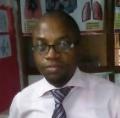Researchers at Wageningen University, Netherlands, have shown that a drop in atmospheric nitrogen deposition will slow down forest growth. Lower tree growth implies less carbon sequestration and thus a decrease in the sequestration of carbon dioxide. This may have a significant impact on the targets set in the Kyoto protocol.
Researcher Wieger Wamelink of Wageningen University showed in model calculations that the carbon sequestration for all forests in The Netherlands, for example, may drop to 27 % of its present value. This reduced sequestration is expected as a result of pollution control policy strategies in all countries with present high nitrogen deposition, mainly located in Europe, North America and Asia.
Carbon dioxide is fixed in wood when a tree is growing. The faster a plant is growing the more carbon dioxide is taken out of the atmosphere. Besides carbon, trees need nitrogen to grow. Normally, this nitrogen originates from soil processes but added nitrogen via air pollution originating from agriculture, industry and transport will stimulate tree growth.
Nitrogen is a nutrient for plant species but they all have their specific preference for the amount of nitrogen. Due to excessive nitrogen deposition many rare species are out competed and are threatened to become extinct. To save the threatened species the EU and its member states have a pollution control policy strategy to reduce the nitrogen deposition. Species will then recover, but mainly outside forests, e.g. in grassland and heathland.
To remove the excess nitrogen from natural areas extra frequent management, such as sod cutting, mowing etc, is carried out. This extra management is costly. When the nitrogen deposition drops, savings of over € 40 million per year is possible on management costs, which is approximately one quarter of the amount of money spent on management in The Netherlands.
Wieger Wamelink will defend his thesis ‘Simulation of vegetation dynamics as affected by nitrogen deposition’ on December, 4th 16.00 h at Wageningen University. See direct broadcasting at http://wurtv.wur.nl/WURTV/WURTV.aspx.






Comments